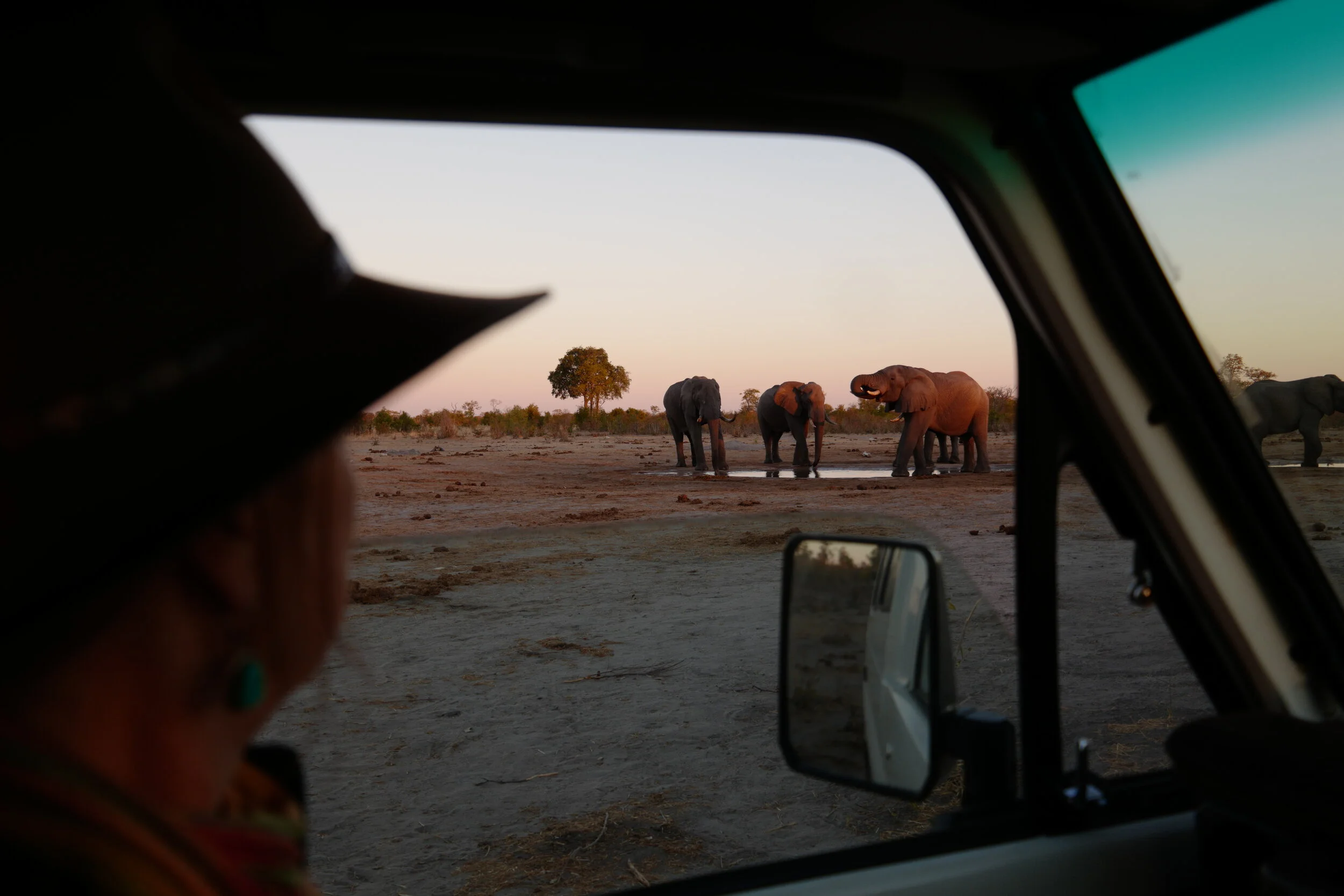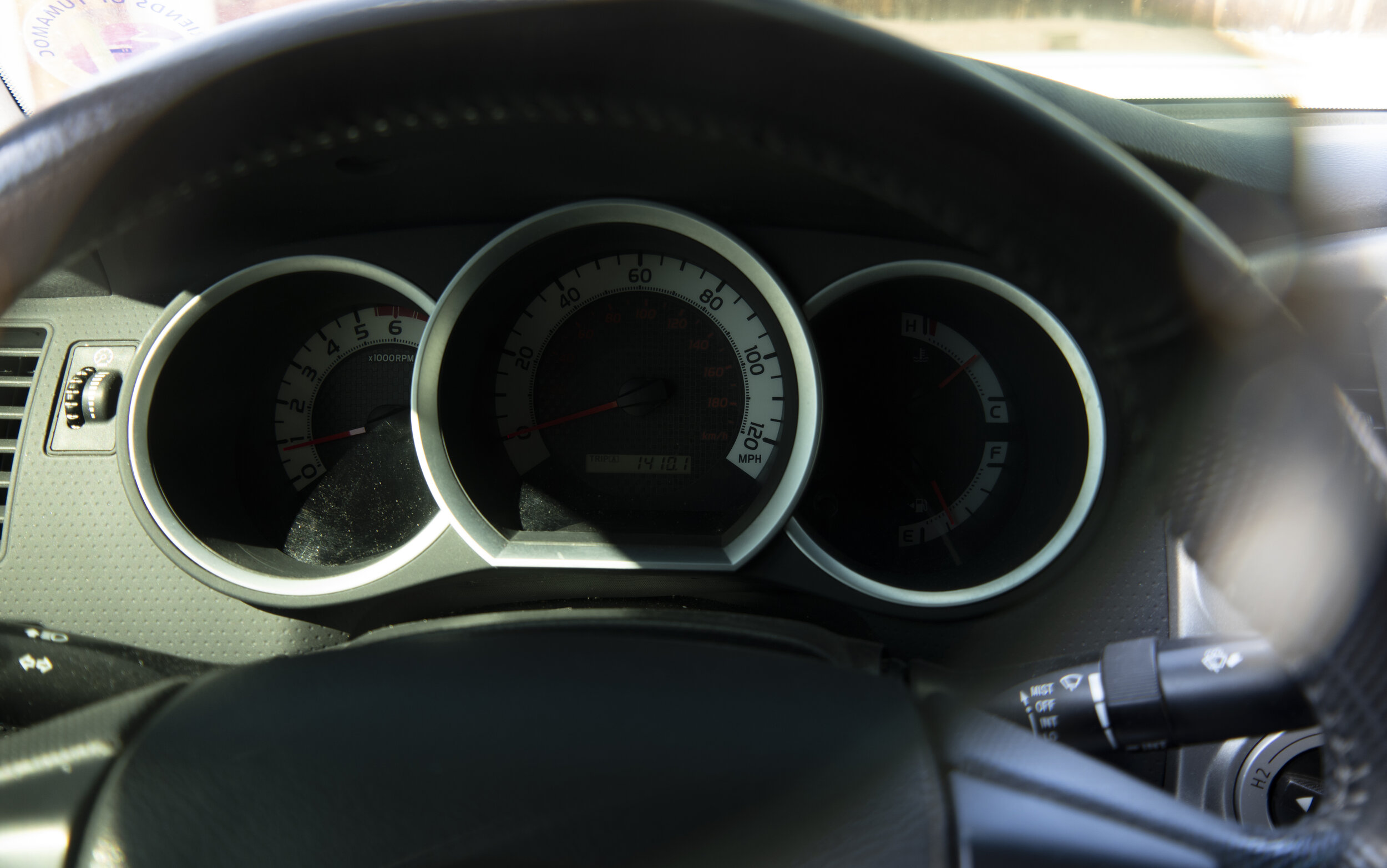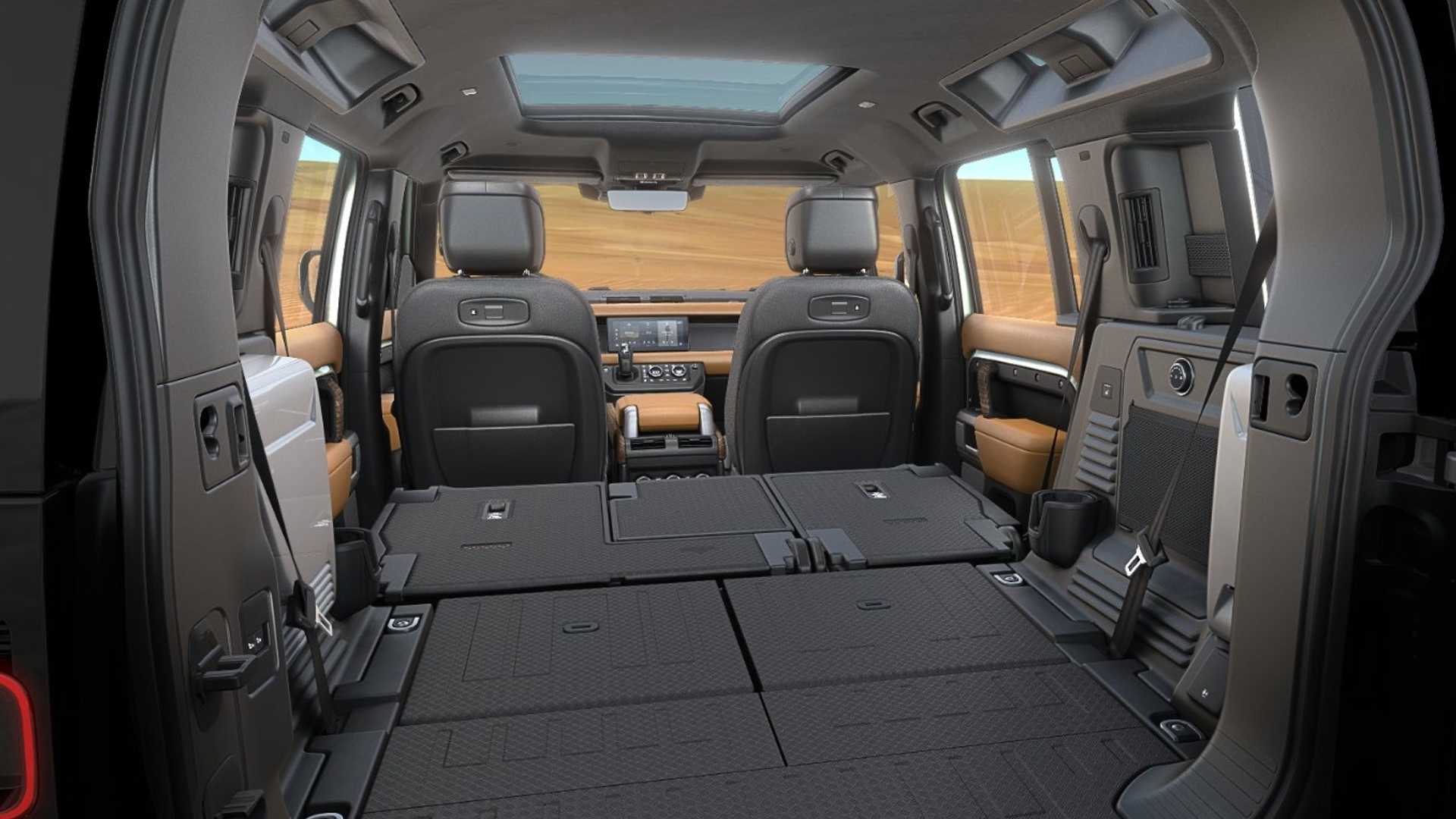
Overland Tech and Travel
Advice from the world's
most experienced overlanders
tests, reviews, opinion, and more
Not April first.
Given Volkswagen’s recent history, I thought this headline was some sort of joke. Nope: as NewsPress reports, the company’s Wolfsburg plant received an environmental award for its “efficient and sustainable production methods.” Presumably the plant is no longer producing vehicles that cheat when tested for emissions . . .
So the new Defender isn't butch enough for you? How about a Grenadier?
A what, you say?
A new, body-on-frame, beam-axled, full-time-four-wheel-drive, made-in-England utility 4x4, that’s what.
At least, if the plans of billionaire British businessman Jim Ratcliffe come to pass.
A couple of years ago, Ratcliffe, the CEO of Ineos, and several friends were chatting over pints in their favorite pub, the Grenadier, lamenting the demise of the Land Rover Defender and its likely metamorphosis into something entirely different. One idea led to another, and soon Ratcliffe—the owner of several Defenders— had a plan in place to carry on the spirit and function of the original. Those plans are near enough to completion that a test mule is reportedly being thrashed in the Austrian Alps, and an introduction is planned for mid-2020 with sales starting in early 2021.
The specs for the Grenadier are enough to make a die-hard “classic” Defender fan swoon. In addition to the characteristics listed above, the vehicle will employ a steel chassis and alumin(i)um body panels. The center differential will lock, and cross-axle diff locks are promised—something Land Rover stubbornly eschewed throughout the lifespan of the original.
In fact, so often and so specifically has Ratcliffe referred to the original Defender that, reportedly, the current Indian owners of Land Rover are watching the proceedings very closely indeed, waiting to pounce if it appears the Grenadier is nothing more than a thinly disguised continuation of their late product.
Ratcliffe, center, and the Grenadier team, with inspiration
Ineos Motors has confirmed the sourcing of BMW power plants for the new vehicle, a 3.0-litre petrol and a 3.0-litre turbodiesel. It has also confirmed intention to build several body styles including a pickup—a configuration notably lacking on the new unibody Defender.
This might sound like just another pie in the sky fantasy if Sir Ratcliffe were not reportedly England’s wealthiest man, and were a factory not already being built in Bridgend, South Wales. Intriguingly, commercial director Mark Tennant has made several references to “the U.S. market.”
Stay tuned.
Exploratory coast-to-coast Africa trip June-July 2020
In collaboration with 7P Overland we are investigating an exploratory Africa recce in 2020—driving overland from one coast of Africa to the other. If you are interested in helping with the reconnaisance, please let us know and we'll put you on an interest list. Requirements: about 4–6 weeks' time available June-July; ability to rent or ship your own 4WD vehicle to Namibia; desire to explore the finest wild places on the continent of Africa, from Namibia to Tanzania; a profound sense of adventure and willingness to help design an ultimate safari.
Instrument clusters, good and not so good
You’d think that, 120-odd years into the history of the motorcar, manufacturers would have pretty much nailed legible instrumentation by now. In many cases they have; in others, I’ve found, not so much.
Consider the cluster on the Porsche 911 above. This one happens to be on a 1982 911SC, but it’s virtually identical to any 911 spanning four decades. Porsche gives you the most critical instrument in a sports car—the tachometer—front, center, and huge. White numbers on a black background, because nothing contrasts better than white on black. You don’t even need to take your eyes off the road to monitor progress through the gears. To the right is a slightly smaller but equally legible speedometer, and to the left the important engine-monitoring gauges (for an oil-cooled vehicle) of oil pressure and temperature. Those gauges that do not need to be read instantly, such as the clock and fuel gauge, are off to the side where you might need to move your head a bit, but not at a moment’s notice.
The 911’s cluster is angled directly at the driver, and inset a distance perfect for preventing overhead glare while not shading them too much. In fact I’ve never found myself in a position in which incoming sunlight or artificial light obscured the instruments beyond easy reading.
One might expect such perfection from the über engineers at Porsche, but in fact the prosaic chrome-ringed Smith’s instruments on my old Triumph TR6 are nearly as good: Tach and speedometer big and up front, auxiliary gauges on the side. (Plus the added charm of that walnut veneer, of course.) The Smith’s have shiny glass fronts that seem to reflect a bit more than those on the Porsche. But notice the same eminently legible white on black motif. And they’re shaded just deeply enough that no sun coming through the windshield can hit them.
I found a similarly flawless instrument cluster in the Mercedes Benz 300D we owned for a few years. Again: white on black, important stuff up front—in this case the speedometer, so we could keep track of the needle’s slow crawl across its arc as we floored the accelerator pedal and waited patiently for results. I’m not even sure why Mercedes bothered with a tachometer on the automatic-equipped cars; a calendar would have been better at recording progress.
Moving on to four-wheel-drive vehicles, the 45-year-old industrial gauge panel in my FJ40 is nevertheless peerless in function and legibility. Again, white on black. The only sign of age on this panel, after four decades and 320,000 miles, is the peeling orange paint on the speedometer needle. (Note, too, in all the examples so far, the comprehensive nature of the information offered, from oil pressure to amperage. Sadly gone on most vehicles now, although some electronic dashes allow you to call it up on a side menu.)
In contrast to all these examples is the instrument cluster on our 2012 Toyota Tacoma, shown here in ideal light:
At first glance, it doesn’t look bad. But notice that, instead of simple white lettering on a black background, as on all our previous examples, Toyota introduced a black background with a white band around the perimeter and black lettering, as well as a spurious “carbon-fiber” looking pattern on the black background. The gauges are also so deeply inset that, even in this photograph, you can see the shade partially obscuring the figures on the left of each gauge. Note as well the extremely poor contrast of the red kilometer markings, completely invisible on the left of the speedometer.
Now look at the same cluster in partial sun from the side, and through the lens of a pair of sunglasses.
Not only do the numbers on both speedometer and tach become nearly illegible, the red needles also disappear against the black background, and even their tips show poorly in the white since you can only see about a half inch of each.
I noticed this characteristic shortly after we bought the truck, and it has annoyed me ever since. I constantly find myself turning my head a bit to look around my sunglasses to see what my speed is. Even turning on the headlamps (and thus instrument lights) doesn’t help. I have the feeling this arrangement was configured on a designer’s computer screen and never actually tested before it went into production.
Fashion is all well and good, but it should never interfere with function.
Designers: White on black. Please. And don’t put the gauges in a cave.
Withholding judgement, but . . . flying a drone in Iran?
I hesitate to jump to conclusions until we have more information, but all accounts I’ve seen so far indicate that this Australian couple, Jolie King and Mark Firkin, were arrested in Iran after they were caught flying a drone near Tehran, possibly close to a military base. They’d been traveling in a Toyota Land Cruiser and blogging their journey until communication stopped in July. Details have just emerged, including in the Guardian, here.
Need I comment on the inadvisability of anyone from a Western power flying a drone in a country at odds with Western powers?
Some (positive!) thoughts on the new Defender
The Defender’s “Commercial” configuration shows promise for those wanting a basic overlanding vehicle.
Now that the wait is over, and Land Rover Design Director Gerry McGovern’s stupefyingly uninspiring introduction at the Frankfurt Auto Show is behind us, and the bile from thousands of defenders of the original Defender is pouring down on the “Pretender” or “Offender,” as it’s been variously dubbed, I thought I would get beyond my own reservations regarding what I think of as the DC100 Version 1.1 styling, and look at the positive side of the new design.
We’ve known for a long time that the new Defender would be an about-face from the original: monocoque construction instead of body-on-frame, all-independent suspension rather than solid axles, efficient aerodynamic design rather than a box on top of a box. So it’s time to let go of those paradigms. The question is, is the new Defender capable of filling the role of a long-distance traveling vehicle, or even a true expedition machine?
Note the lead photos above, which show the 90 and 110 in what Land Rover calls the Commercial configuration. Steel wheels (albeit, at 18 inches, larger diameter than optimum), coil springs, simplified interior, and, in the 110, a cargo capacity of up to 900 kg (1,980 pounds). That is pretty close to the previous 110, and far above, for example, the Jeep Wrangler Rubicon—in fact just about double. Also, from a pure looks standpoint, the Commercial’s solid white back quarter looks infinitely more handsome than the regular model’s bizarre body-color square covering the massive C-pillar, a design flub that completely ruins the linear continuity of the greenhouse. (I understand the body-color panel might be an option; if so it should be called the “Uglify package.”)
Look at the cargo area of the 110. The rear seats fold completely flat—three cheers to Land Rover for making that happen.
There’s a lot of side intrusion into the space due to those C-pillars, which house AC ducts (note how they also bifurcate the alpine windows above them), but it looks long enough to lie down in, one of my personal criteria for a long-wheelbase overlanding vehicle—for those midnight camps after a long drive when you just need to sleep. However, the protruding hinges on the two-thirds split seat look like they’d dig into the back of anyone lying on that side. Still, overall a practical-looking cargo area, with less intrusion than the interior roll cage and speaker housings on the Wrangler Unlimited.
In terms of capability, the Defender should shine. The approach and departure angles on the 110 (38 and 40 degrees, respectively) compare favorably with those of the Wrangler Rubicon Unlimited (44 and 37). The breakover angle is markedly superior at 28º versus 22.6º.
The Defender boasts a world-class fording capability of 900mm (just half an inch under three feet). Not only that, the Wade function on the Terrain Response system will automatically soften throttle response, lock the driveline, switch the ventilations system to recirculate, raise the (air) suspension to its maximum height, display the water depth on the infotainment screen, and drag the brakes slightly for a few meters after exiting the water, to dry them. Astonishing.
Speaking of Terrain Response—Land Rover’s pioneering and much-copied user-selectable system that alters vehicle dynamics to accommodate varying terrain—the Defender’s system will also be user-programable to suit individual driver preferences and experience.
Land Rover claims an astounding 45º side slope capability and a 45º ascent capability for the new Defender. I seriously doubt any owner will approach either of those limits. And never in any company’s literature have I seen so many quantified references to strength and durability testing as I found in the full-length technical brochure for the Defender. For example, in regards to the vehicle’s double wishbone front suspension and integral-link rear suspension, the brochure says the Defender “withstood repeated 200mm (eight-inch) kerb strikes at 25 mph.” Say what? Also, “the wheels can withstand up to seven tonnes of vertical load into the body.” And, “The monocoque body construction developed for new Defender is the stiffest aluminium body Land Rover has ever produced and able to withstand 6.5 tonnes snatch load through the recovery points. “
Returning to the interior, I think the dash layout might be my favorite feature of the new Defender. It is simple, elegant, and functional. To me it looks exactly like the 21st-century descendant of the Series II dash. Even the ubiquitous center touch/infotainment screen looks like it belongs there—something I can’t say about several $120,000 luxury sedans. Yes, the steering wheel has too many buttons, but most of them can be ignored anyway. Several features reveal genuine consideration to actual real-world use. Got cargo piled so high in the back it blocks the center rear-view mirror? Flip a switch and the rear camera projects the view into the mirror. Nice.
And yes, gone forever are the three transmission/transfer case levers and their red and yellow knobs. In fact, given the dash mount of the automatic gear selector, I doubt the Defender is configured to ever accept a manual transmission. Which . . . and I never thought I’d write this . . . is a good thing. Modern automatic transmissions are superior to their manual counterparts in virtually every way, including power delivery and fuel economy, not to mention the ease of driving on slow rough tracks or the magic of hill-descent control. The new Defender is never again going to be a vehicle an owner disassembles to repair or rebuild under a mango tree in Zambia, so the added complexity of an automatic transmission is really not an issue.
One factor in the suitability of a vehicle for long-distance journeys is often overlooked, and that is comfort. To say the new Defender will eclipse the old one in this regard is stating the obvious. At a guess I’d say the new one will double the comfortable daily mileage an owner can expect to cover when transits necessitate a dawn to dusk marathon.
The remaining factor, of course, is reliability, the one area in which Land Rover has long taken a fourth or fifth place to its Toyota, Nissan, Mercedes Benz, and Jeep competition. I can only hope Gerry McGovern and his team fully grasped the critical need to get that part right this time.
I know one thing: After thoroughly studying the detailed specifications and capabilities of the new Defender, I find myself for the first time genuinely excited for an opportunity to drive one.
The new DC100 . . . I mean Defender . . . is here.
In 2011 Land Rover unveiled a concept for a new Defender called the DC100. The looks of the prototype were so universally panned that it vanished within weeks and was never seen again.
Until now.
Eight years later Land Rover has unveiled the actual new Defender. And, pardon me if I’m being myopic, but—at least in photos—I’m having a devil of a time distinguishing a revolutionary change in styling from that short-lived concept.
More soon about the advertised capabilities—which are impressive—and the option packs, some of which border on eye-rolling in their pandering to millennials seeking to appear more rugged than they really are. I don’t think I could stand to tick an option box called the “Adventure Pack.”
Hint: When using “Search,” if nothing comes up, reload the page, this usually works. Also, our “Comment” button is on strike thanks to Squarespace, which is proving to be difficult to use! Please email me with comments!
Overland Tech & Travel brings you in-depth overland equipment tests, reviews, news, travel tips, & stories from the best overlanding experts on the planet. Follow or subscribe (below) to keep up to date.
Have a question for Jonathan? Send him an email [click here].
SUBSCRIBE
CLICK HERE to subscribe to Jonathan’s email list; we send once or twice a month, usually Sunday morning for your weekend reading pleasure.
Overland Tech and Travel is curated by Jonathan Hanson, co-founder and former co-owner of the Overland Expo. Jonathan segued from a misspent youth almost directly into a misspent adulthood, cleverly sidestepping any chance of a normal career track or a secure retirement by becoming a freelance writer, working for Outside, National Geographic Adventure, and nearly two dozen other publications. He co-founded Overland Journal in 2007 and was its executive editor until 2011, when he left and sold his shares in the company. His travels encompass explorations on land and sea on six continents, by foot, bicycle, sea kayak, motorcycle, and four-wheel-drive vehicle. He has published a dozen books, several with his wife, Roseann Hanson, gaining several obscure non-cash awards along the way, and is the co-author of the fourth edition of Tom Sheppard's overlanding bible, the Vehicle-dependent Expedition Guide.

























